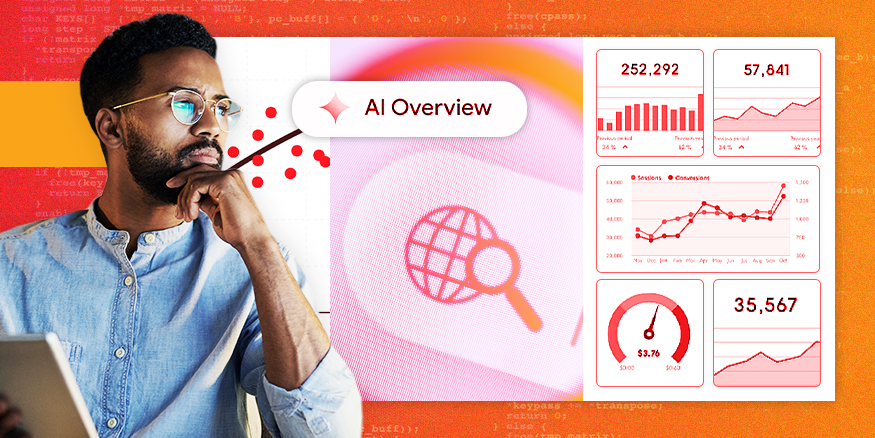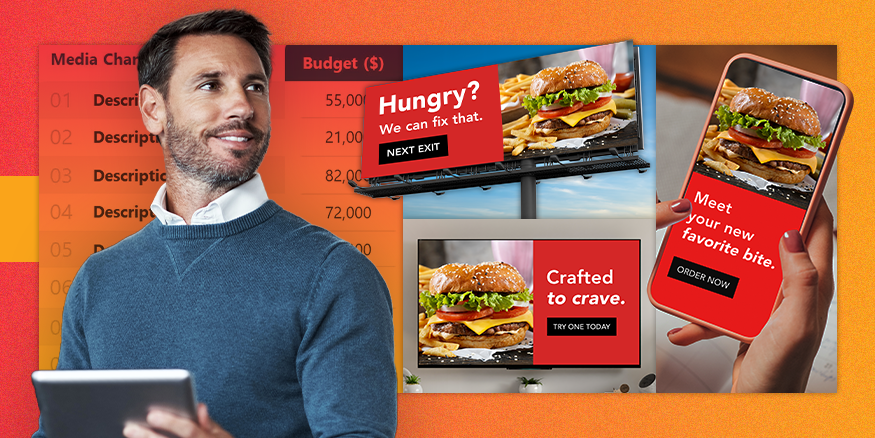

This week, Felicia Delvecchio, Vice President, Media, and Zhenya Brisker, Vice President Digital Media at DAC are attending Google’s Think Retail 2025 event, where the spotlight is on how AI is transforming the holiday shopping season and beyond. From new ad solutions to creative tools and measurement upgrades, Google shared innovations designed to help brands connect with shoppers and drive impact. Here’s our recap of the key announcements.
Shoppers’ Behavior Is Changing And AI Is the Unlock
The way people shop has fundamentally shifted. Consumers are still spending, but they’re approaching the holiday season — and retail in general — with far more intentionality than in years past. What was once impulse-driven is now deliberate. Value is no longer just about price; it’s a more nuanced equation: value = price + confidence + convenience. This shift in mindset changes everything for marketers.
People are starting their holiday shopping earlier, spanning a longer window that stretches from October to January. On average, they engage with more than five touchpoints during the journey, and Google and YouTube are part of nearly every one. As the retail path to purchase gets more complex, what’s clear is that brands can’t afford to leave discovery up to chance.
This is where AI becomes the unlock. Google is embedding artificial intelligence directly into the consumer journey, from natural language queries, to visual and voice search, to AI Overviews that now appear prominently in Search. These tools aren’t just tech upgrades, they’re changing how people find, evaluate, and act on information. For brands, it means there’s now an opportunity to show up with precision and relevance much earlier in the funnel, before a customer even searches with buying intent.
New AI-Powered Ad Solutions
Google is rolling out a slate of ad innovations that reframe how brands approach search and performance media. These updates lean on AI to simplify complexity, expand reach, and make campaign management more adaptive during high-demand moments.
The first big development is AI Max for Search. This tool goes beyond keyword targeting by automatically capturing a wider range of unpredictable queries. The impact is measurable: advertisers using AI Max are already seeing 27% more conversions compared to keyword-only setups, thanks to its ability to personalize ads and landing pages on the fly.
Ads are also being integrated directly into AI Overviews and AI Mode within Search. This marks a fundamental change in how results are presented to consumers, with products and messaging now visible in the exact moments when people are researching options. For marketers, success will depend on optimizing across the TotalSERP, treating every surface (organic, Shopping, AI, and paid placements) as part of one unified customer experience.
Budget management is also evolving. With campaign total budgets, Google can automatically pace spend around critical retail surges — like Black Friday or holiday shipping cutoffs — ensuring investment aligns with real-time demand. Instead of manually adjusting daily budgets, advertisers can set guardrails and let the system flex where it matters most.
On the audience side, Google introduced new prospecting and retention controls. Brands can now exclude recent engagers to focus only on net-new audiences, while loyalty retention mode leverages CRM data to keep existing customers close. When paired with New Customer Acquisition goals, marketers gain a more precise way to balance growth and retention, critical for holiday periods when efficiency and scale must coexist.
Creative & Shopping Upgrades
Today’s shoppers expect more than just seeing an ad — they want creative that feels fresh, relevant, and easy to connect with. Google unveiled a set of new tools designed to help retailers transform product feeds and creative assets into compelling, shoppable experiences at speed.
At the foundation is a revamped Merchant Center, now equipped with stronger product insights and improved feed quality checks. This makes it easier to ensure accurate, high-quality data flows across campaigns, while also simplifying omnichannel integration so retailers can better connect online and in-store offerings.
On the creative side, Product Studio uses AI to instantly generate seasonal images, backgrounds, and product shots, allowing brands to refresh visuals without lengthy production timelines. The result is a more agile content pipeline, where assets can be quickly updated and deployed across Search, Shopping, Display, and Video.
Google is also bringing video into Merchant Center. Brands can now link site or social videos to their product listings, with AI automatically detecting featured items and making them shoppable. This is a powerful step toward blending storytelling and commerce, ensuring that video content works harder to drive discovery and conversion.
Together, these upgrades empower retailers to deliver experiences that keep pace with shopper expectations, and to do it at the speed the holiday season demands.
YouTube as Performance TV
YouTube has long been a leader in streaming and culture, but it’s now equally a driver of performance. With over 200 billion daily Shorts views and its position as the #1 streaming platform, it’s where audiences spend their time — and where brands can spark measurable demand.
Google’s updates make YouTube more actionable than ever. Demand Gen campaigns now optimize for outcomes like store visits and app installs, while the Creator Partnerships Hub makes it easier to activate trusted voices at scale.
Perhaps most significant is the rollout of Branded Searches (formerly Attributed Brand Searches). This feature proves how YouTube, PMax, and Demand Gen fuel incremental brand demand across Search and YouTube, directly linking cultural influence to conversion.
In short, YouTube has evolved from a branding channel into performance TV, one that connects storytelling, shopping, and measurable results in a single ecosystem.
Stay Forward
Get exclusive insights into digital
media's top-trending topics delivered
directly to your inbox.
Data & Measurement to Prove ROI
With so many new surfaces and AI-driven experiences reshaping the shopper journey, proving impact has never been more important. Google is addressing this challenge with upgraded tools that bring together data sources, enable deeper testing, and provide clearer forecasting.
Data Manager and Tag Gateway make it easier to unify site, app, store, and CRM signals, ensuring AI models run on stronger, more consistent inputs. For campaign performance, incrementality experiments now require as little as $5K in spend, while Meridian MMM provides a modern take on marketing mix modeling to guide smarter allocation.
To support agility, cross-channel forecasting in Google Analytics shows where budgets are working hardest, enabling mid-season pivots when demand spikes or shifts.
These updates give marketers the confidence to measure real lift, adjust quickly, and demonstrate ROI in a more complex retail landscape.
Google Holiday Playbook
To help retailers put these innovations into action, Google outlined a clear playbook for the 2025 holiday season, one built around speed, creativity, and measurable impact.
- Search: Run AI Max campaigns with New Customer Acquisition goals, and use campaign total budgets to flex spend during peak shopping moments.
- Creative: Leverage Product Studio to quickly refresh visuals and seasonalize product feeds without long production timelines.
- YouTube: Treat YouTube as performance TV — prioritize Demand Gen, Shorts, creator collaborations, and shoppable CTV to drive both reach and conversions.
- Measurement: Track Branded Searches to prove the halo effect of YouTube and PMax, and use incrementality tests to validate true lift.
The underlying message is clear: holiday winners will be those who use AI not to predict consumer behavior, but to capture demand wherever and however it emerges. By meeting shoppers seamlessly across Google and YouTube, proving value through smarter measurement, and scaling creative with agility, retailers can move into the 2025 holiday season — and beyond — with confidence.
Alongside Google’s recommendations, we’ve outlined our own perspective in the 2025 Q4 Strategy Playbook, built to help retailers navigate the shifting U.S. holiday market with confidence.
Contributing Experts
Stay Forward
Get exclusive insights into digital
media's top-trending topics delivered
directly to your inbox.




